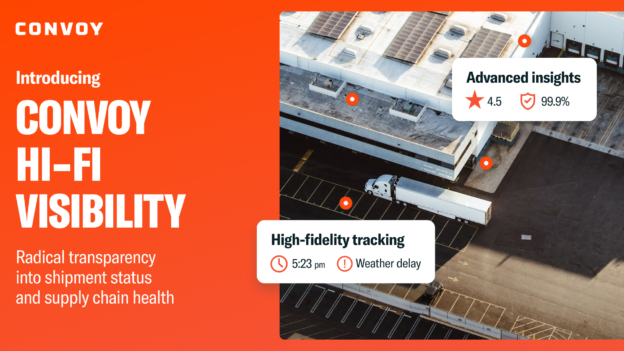FreightWaves September Webinar Recap on Hurricane and Market Outlook
Shippers • Published on September 20, 2018
Thanks to all who attended Tuesday’s FreightWaves webinar sponsored by Convoy. The session included an in-depth look at Hurricane Florence, several key economic indicators for Q3, a review on capacity and an outlook on the market.
The following is a summary of the webinar along with additional Convoy insights that we believe will arm shippers and carriers with critical macroeconomic intel to help drive successful outcomes into 2019.
Impact of Hurricane Florence
Over the past week, the impacts of Hurricane Florence have been widely felt in the trucking industry. Heavy rainfall has caused serious flooding, resulting in the closures of major highways and thoroughfares. The severe flooding will continue into next week, when rivers are finally expected to recede.
Damage from the storm is estimated at $15-20 billion, including significant disruption to local manufacturing, housing, and retail spending. Fortunately, with the nature of these events, much of the loss to GDP will be made up in future months as the rebuilding process gets underway.
There has been a significant uptick in inbound freight to major metros outside the affected area, with cities like Charlotte and Atlanta serving as staging areas for relief supplies. Meanwhile, areas that are more immediately affected, such as Raleigh, have experienced sharp declines in trucking activity. Carriers have moved their equipment out of harm’s way and are rejecting primary tenders.
Trucking Employment and Capacity Update
Trucking employment has increased over the year, outpacing hiring in the broader economy. FreightWaves took a look at how that hiring breaks down and where the capacity has been added over the year.

As an industry, trucking employs approximately 1.48 million individuals. Over 60 percent of those are involved in long-distance freight. While both long-distance and local trucking have added employment in 2018, local hiring has tapered off in recent months. This aligns well to capacity needs of each as long distance capacity continues to be tight, with local trucking markets starting to reach equilibrium.
Freight Market Outlook
Overall, the economy remains in a strong place, with experts at FreightWaves anticipating 3 – 3.5% GDP growth in Q3.
| Tailwinds | Headwinds |
|
|
August was a particularly quiet and stable month for trucking rates. September has seen a bit of an uptick in spot market activity and rates generally, with much of the increase being driven by hurricane preparation and recovery efforts.
Q4 is expected to be a strong period for trucking, with rates likely peaking in mid-late November. As we move into 2019, we should expect another fairly tight capacity year. Unless we experience a major shock to the market, we anticipate that contract rates will increase ~4% YoY.
Shippers – interested in learning more about our industry-leading tender compliance, on-time service, and data-driven insights? Call us at 206-209-0305
Carriers – interested in a hassle-free experience, automated detention, free quick pay, and unique offerings such as Request-A-Load? Call us at 206-202-5645



